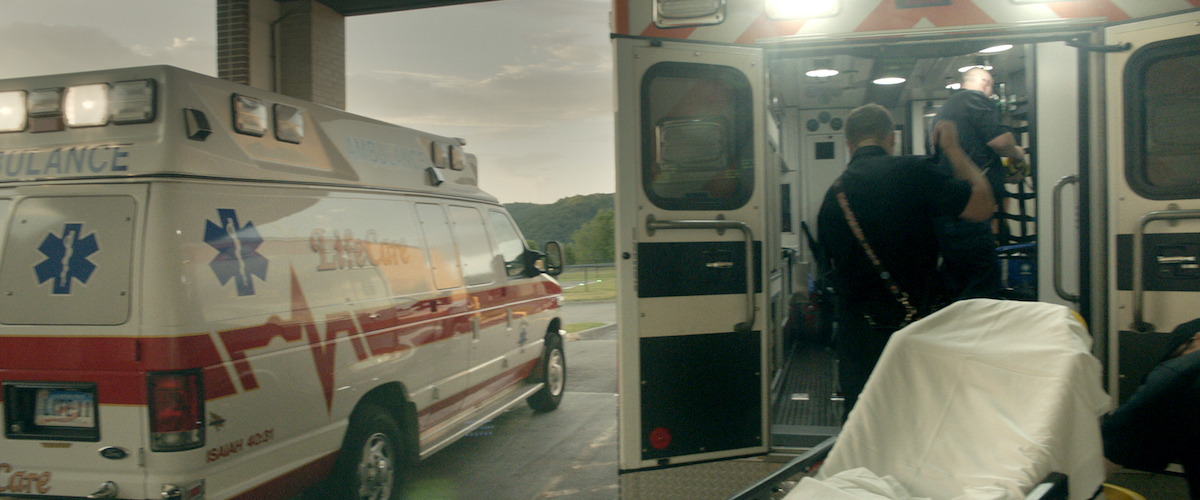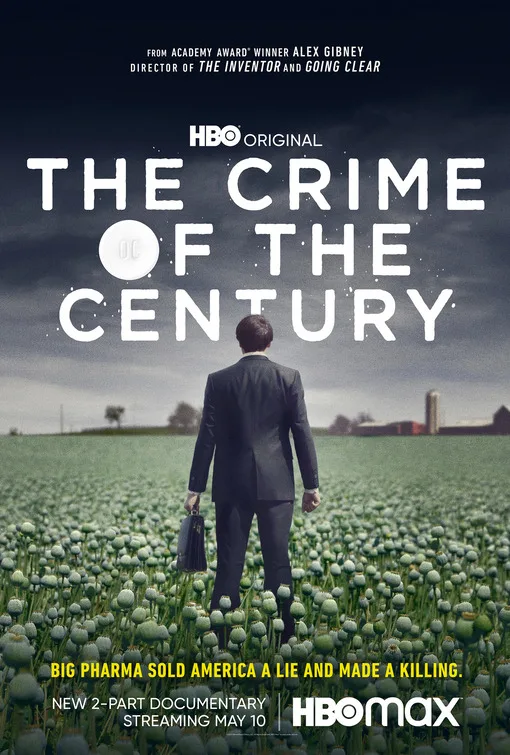There is a great deal of convincing evidence that proves how billion-dollar pharmaceutical companies are the true drug dealers behind America’s opioid crisis, skirting full accountability for years by paying penalties in paltry millions so they can keep making billions. (Meanwhile, 500,000 Americans have died from opioid-related overdoses since 2000.) Much of that evidence is crammed in the two-part docuseries “The Crime of the Century,” some of which has never been seen by the public before with regards to depositions and court documents. Such revelations, gathered by prolific documentarian Alex Gibney and his team, prove to be an incredible and necessary find. It’s more that the flaws in this docuseries come from Gibney’s storytelling, as it’s the narrative shifts or even tacky music choices that can give you whiplash more than how the overall narrative accuses pharmaceutical companies of mass murder. But while “The Crime of the Century” becomes a wildly broad damnation of the forces behind the opioid epidemic, it’s nonetheless righteous in its anger.
This is a saga comprised of enormous greed, hundreds of thousands of Americans addicted to prescription pills with heroin-like dosages, sales reps entering Faustian bargains, parasites with medical degrees who run “pill mills,” and Rudy Giuliani. The drug lords here aren’t like Tony Montana or Walter White, but are corporations like Purdue Pharma and the now-bankrupt Inysys. Calling out other companies in the process (including a too-brief diversion about how Johnson & Johnson is the opium “kingpin”), the docuseries charts a history of how these companies made a disgusting amount of profit from selling pain medication, knowingly targeting struggling communities and schmoozing with doctors to get the product into more and more homes. Whether it’s the doctors who practically gave away pills for a cash fee, the owners of pain clinics of Lynn Webster whose business relied on patients using the drugs (even when addiction clearly took over), or secretive pill distributors like Cardinal-Health, the film creates a sobering picture of this monstrous greed.
Armed with a large supply of insider information about these companies, the series almost uses a “here’s how to become an insidious, billion-dollar pharmaceutical company” approach. Like with gangster movies, it becomes compelling as a fully immersed study of this evil, to at least be aware of how the true opioid mechanics work—what they are made from, how they are sold, and how the FDA and Congress can be outsmarted in the process (sometimes, it’s as easy as who is on your side). But then there are the heroes who have not been bought by big pharma: Expert journalists, writers, former DEA people and doctors who have tried to fight back and get the word out. The documentary was made in part with the Washington Post, and their reporters get a few Spotlight-like beats as they recount their investigation into big pharma in the mid 2010s.
“The Crime of the Century” promotes some necessary disillusion, as its story goes against a certain beacon of integrity we all trust—”medical professionals.” Not that the series is anti-science, far from it, but that it starts with the greedy practice started by Raymond Sackler, a business man, a manipulator, a pusher man. (Gibney then cues up Curtis Mayfield’s “Pusher Man” from “Super Fly,” along with footage of the Sackler estates. Sigh.) Raymond began a practice of fabricating doctors when obtaining endorsements for his medicines by the Purdue Pharma company, and it completely worked. It also laid the groundwork for how Purdue Pharma would seek to legitimize OxyContin and downplay its addictive potential, carried on by his son Richard, seen here in deposition footage after Kentucky sued Purdue Pharma in 2015. A little wordplay here, (like the nonsense of “pseudoaddiction,” some PR with Rudy Giuliani here. Pain was presented as a relatable marketing cause, and pills like OxyContin became the champion. At its best, Gibney’s documentary can display a great ability to rip back the curtain on these companies, to show how easily they can take advantage of the narrative.
Part two, “What’s In It For Me?” plays almost like a cover of the first episode, given how tactics of corporate greed do not change, so much as are taken up by different soul-suckers. It focuses on the legacy of Insys, another company that forced its play into the business of mainstreaming opioids, spearheaded by entrepreneur John Kapoor. Here too, Gibney gets deep into the machinery of this business, including the sales people who were very good at their jobs and later faced an all-too-rare reckoning. Kapoor’s former VP of sales Alec Burlakoff shares his experience hustling for the company, pushing the drug onto doctors. So does one of his best hires, regional manager Sunshine Lee, a hardworker who fell into the trap of what Insys promised, but also had her own responsibility in such a craven game. They sold their souls to this cause that became more and more corrupt, and their time on-camera, divulging how Insys lied to insurance companies so that clients can receive deadly opioids like fentanyl, plays out like an attempt at getting it back.
Recounting so much history, recalling all these deals and all of this criminal activity gives some of “The Crime of the Century” a sluggish feeling of “then this happened, and then this happened”. But Gibney tries to push against that by mixing in present-tense scenes from the frontlines of the opioid crisis, whether it’s with a paramedic in a community heavy suffering from the epidemic, or a DEA agent trying to make a sting on a dealer. There are also testimonies from addicted Americans, with their own extreme stories of how the product has become so unregulated (like Gary and his prescribed 50 pills a day). These stories add more of a human, often heroic side to it, and yet they also help make the documentary emotionally unfocused. “The Crime of the Century” doesn’t quite pull off a graceful juggling act between educating how the system has been broken, showing how lives are completely destroyed by these pills, and then factoring those who have tried to make a difference.
This is one of Gibney’s most explosive documentaries, but it also has to be one of his most overzealous in how it’s all presented. Indeed, no ominous drone shot of the Purdue Pharma building is spared (though the final one is a good kicker), and the same goes for close-ups of pills with OC stamped on them. And any time Gibney can throw in a recognizable song to lead a sequence, he goes for it, like when footage of opioid crime is accompanied by John Denver’s “Take Me Home, Country Roads”; eventually some of the music-driven sequences match the cheesiness of the corporate rap videos that Gibney uses for mortifying comic relief, which includes the rapping opiate. But seriously: while the documentary has so much to share, it doesn’t have the poignancy or poetry that helps such informed calls for attention to truly resonate. (Gibney’s recent HBO doc “Agent of Chaos” nailed this when it came to retracing Russian interference in American elections.) Instead it becomes a fairly cold affair, even though its tale embodies very human flaws: some people will do anything for more power and money, countless more will do anything to feel better, especially within the cycle of addiction. “The Crime of the Century” illuminates this gruesome dichotomy by giving viewers every piece of evidence it’s got. Maybe with all of this information out there now, other filmmakers and journalists will be able to tell similar stories that are a bit more focused, but just as necessary.
Part one airs on HBO on May 10; part two airs the following night.




















